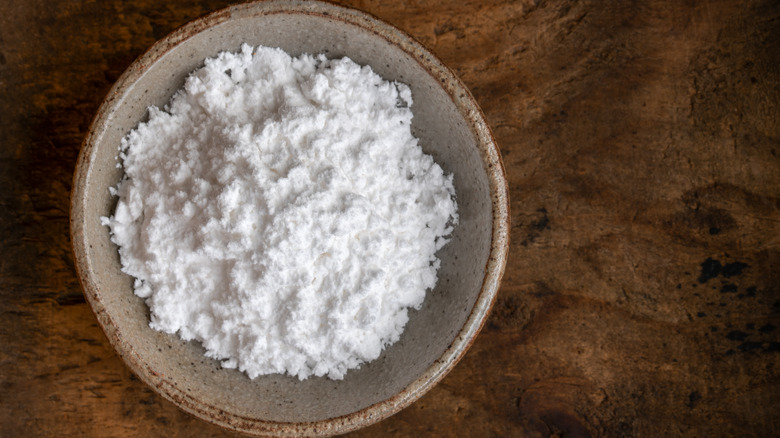Start Adding Cream Of Tartar To Your Tomatoes For Maximum Flavor
When in the peak of tomato season, doing anything to alter the flavor of these delicious fruits probably sounds like madness. Red, gold, and green tomatoes, straight from the vine, deserve nothing more than a bit of salt, right? This may add some extra flavor, however, if you really want to take your fruit to the next level, all you have to do is reach for the cream of tartar. Bearing a name that conjures confusion, this ingredient is an acidic powder that was first identified as a byproduct of the winemaking process.
Potassium hydrogen tartrate naturally forms in grapes due to acid dissociation of tartaric acid, and you may have even seen its formation as small clusters of "wine crystals" that can form inside bottles that have been allowed to sit. It has been used since the 18th century for a variety of applications, culinary and otherwise, mainly as a stabilizer. In this role, cream of tartar is added to whipped cream, egg whites, and batters to help their delicate foam structures hold their shape.
Tomatoes, though, aren't a foam, but a ripe fruit, so it's perfectly understandable that you may wonder how cream of tartar can help boost its flavor. The answer lies in understanding further what the substance is and how it is made.
How does cream of tartar help tomatoes
Most of the acids we employ in cooking are liquids, like vinegar or citrus juices. But they don't have to be. Powdered citric acid is frequently used as a straightforward souring agent, though most often in the commercial culinary realm. Cream of tartar is another powdered acid, but one that delivers tang without other flavors. Whereas a bit of balsamic on your Caprese does add to the experience, you can't escape the thought that its inherent flavor may be masking others.
Cream of tartar, when applied conservatively, can add the acid you seek for your tomato without occluding the gamut of flavors therein. In fact, the substance actually enhances the natural flavor of fruit, not unlike a spotlight that brings your focus to a performer. A tomato's natural acidity is allowed to shine with the support of the acid in the cream of tartar. That acidic accentuation is also responsible for a more nuanced sweetness, as the tartness puts its natural sugars in a more stark contrast.
The key here is to be sparing in the distribution of the cream of tartar. Adding too much will indeed overpower the tomato and lead to off flavors. Dice or slice the fruit in question, season them with salt, pepper, and a scant teaspoon of cream of tartar, and gently toss to combine before letting them sit for a while for the seasoning to penetrate. Once you take a bite, be prepared to be amazed.

